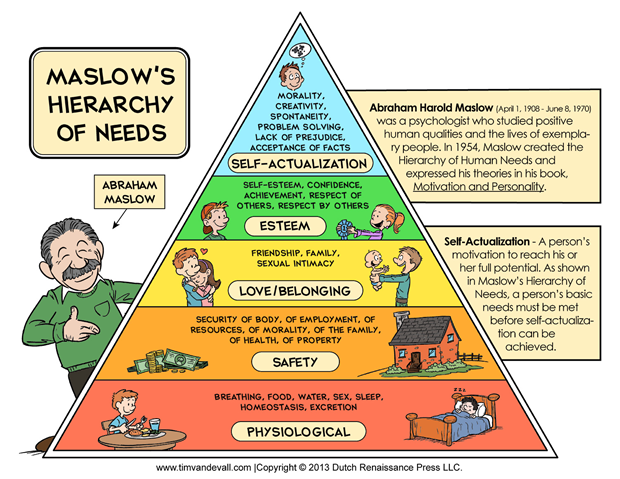
Choose and learn: from the Triune Brain, to the Maslow pyramid up to the Ikigai
When we come across the idea of a tripartite brain for the first time, the first reaction is that of a wow !, with which we seem to be able to explain everything. This is the theory formulated by the evolutionary psychologist Paul McLean in the early 1970s, according to which three parts of the brain are distinguished, each dedicated to distinct functions but operating on the basis of a ‘hierarchy’, the so-called Jackson principle, according to which reactions the external stimuli start from the oldest areas of the brain and move towards the most recently formed structures (from instinctive survival reactions, to the sociability of emotions up to the sense of self). Of course, this is a very ‘catchy’ component of a river of neurological and neuroscientific research that is still in full swing.

Yet, it schematizes in a very effective way the ‘evolutionary’ origin of the structure of our brain and therefore of our behaviors. In reality, on closer inspection, a few years earlier, the psychologist Abraham Maslow was elaborating, in completely different ways, a theory on the motivational needs of individuals that has a lot of bearing on the triune brain. Maslow dedicates his most important studies to the topic of motivation and develops a theory according to which the motivational needs of a human being evolve according to a hierarchical scale (pyramid) that starts from the primary and physiological needs to get to the higher and secondary ones or estimation. , security, affection, love and giving rise to self-realization.

It was only after his death that these concepts were condensed into another iconic image: a pyramid that starts from basic needs to reach the need for self-realization; you go up one step only if the one above is ‘satisfied’: you don’t skip ‘motivational’ steps!
Maslow and his heirs tell us that if basic needs are not satisfied, one does not have the ability to express higher level needs.
If you think about it, this hierarchy of needs is very reminiscent of the tripartite division of McLean’s theory: survival first, then emotions, then the self. If physiological needs are not met, all the others will have no meaning (a kind of motivational seizure!). Immediately after, it is up to the needs of security, stability, protection; these are the needs that structure behavior and open the way to sociality. In fact, as soon as security is acquired, one begins to think about belonging, about affectivity. But the human being is not completed here: from emotional stability one passes to the desire to be esteemed and understood (not only by others but also by oneself!). At this level there is the drive for personal improvement, the formation of ambition. And then, we move on to the need for self-realization, dedication to thought and abstract passions.
The motivational stimulus emerges when the individual feels a need, understood as the perception of a gap between the current situation and the desired future. We can say that the need represents a state of dissatisfaction that induces the individual to take action in order to change their condition.
From a team point of view, it is very important to recognize that each individual instinctively feels the need to belong to a group, to a community and to be recognized. The lack of recognition causes a very strong state of dissatisfaction and demotivation that is physiological, expressed at the level of the limbic brain, and therefore able to have ‘priority’ over (neocortical) thinking. This is no small factor. Let’s remember that.
On the contrary, the feeling of belonging, being accepted and recognized, has a physiologically beneficial effect and allows us to access a higher level of brain activity. If you think about it, we have just given a ‘physiological’ explanation of why trust and psychological security are so crucial, which we have heard a lot about and written about with Paolo Chinetti in #ilteamgiusto.
A beautiful conclusion to Scott Barry Kaufman’s book, Transcend, updates Maslow’s model by adding a phase, transcending, and the author recalls a concept, Ikigai, borrowing it from Japanese culture to focus on the idea of transcendence. Ikigai refers to why we live, to what gives a reason to our efforts. It has a very beautiful and expressive graphic representation, look at it and you will understand it for yourself. What is your Ikigai?
Working as a team mobilizes all the demands of the Maslow scale, up, up to the need for self-esteem (and if we follow Kaufman, to the realization of a permanent state of growth). This applies to the individual team member as well as to the collective. For this reason, the creation of a climate of sharing, listening and psychological safety determines the success and the degree of innovation of a team. The condition of psychological safety (@Amy Edmondson’s studies tell us) develops in a team where a climate characterized by interpersonal trust and mutual respect has been created, thanks to which people can be freely themselves. This is how the team establishes shared rules for conflict management, for the exchange of ideas, for the recognition of errors and, therefore, for learning.

